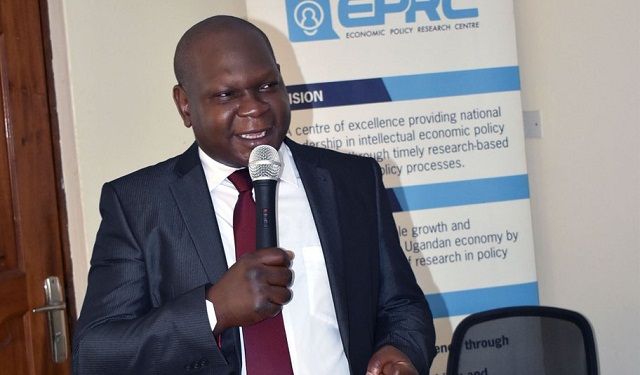
Kampala, Uganda | THE INDEPENDENT | Uganda loses between 30 and 39 percent of revenues that should be collected through Value Added Tax (VAT). This is contained in a research paper titled “The Value Added Tax Gap Analysis for Uganda” authored by Economic Policy Research Centre (EPRC) researchers Corti Paul Lakuma and Brian Sserunjogi.
The study shows that the compliance gap, that is the difference between actual revenues collected and the potential revenues that could have been collected given the policy framework that was in place during that year, is in the range of between 30 and 39 percent. The findings are based on VAT data analysed between financial year 2009/10 and 2016/17.
The estimated gap is higher than the typically observed levels in Sub Saharan countries and near the levels in Latin American countries.
According to the researchers, the estimated compliance gap increased to 64 percent of potential revenue in 2010/11.
This was largely due to the significant reduction in imports during the 2010/11 election season, the lag effects of the global financial crisis, the effects of rebasing the economy from 2005/06 to 2009/10 and potential loss of information during the switchover from a manual VAT system to an e-tax system.
The study notes that the VAT compliance gap has since gradually decreased to 30 percent of potential VAT revenues in 2016/17. The size of the compliance gap relative to GDP was between 2.3 percent and 3.6 percent of GDP.
The study also shows that loss in revenues due to VAT policy gap, that is the impact of tax polices like tax exemptions and waivers, is between 1.1 percent and 0.5 percent of GDP in 2009/10 and 2016/17 respectively.
Manufacturers were found to have large compliance gaps. Potential VAT revenues in the manufacturing, construction, wholesale and retail trade, water supply, other social services, and arts, entertainment and recreation sectors are estimated to be greater than actual collections.
Also, potential VAT revenues in the electricity, transport and storage, accommodation and food services, telecommunication, financial and insurance, real estate activities, professional, scientific and technical activities, and administrative and support service activities are estimated to be less than actual collections.
On the other hand, electricity, gas, steam and air conditioning accounted for 5.5 percent of total VAT collections in 2016/17, a four percentage point rise from 2010/11.
The study observes that Uganda’s public expenditure is growing at a fast rate due to the need to finance her National Development Plan (NDP) with the goal of attaining high middle income country status as envisioned in the Vision 2040.
The study notes that in order to finance her National Development Plan Uganda’s stock of public debt, both domestic and external, has increased significantly. The study states that with foreign aid dwindling, Uganda has made commitments to step up its efforts to mobilize domestic resources to finance the NDP.
Accordingly, states the study, VAT is one of the key taxes that could boost domestic resource mobilization due to its relative efficiency and effectiveness. Despite this, the study concludes that the revenue productivity of Uganda’s VAT is low when compared with other Sub-Saharan African countries.
The authors hope that evidence generated by the study will help the Uganda Revenue Authority to monitor and identify what is contributing to its VAT gap.
***
URN
 The Independent Uganda: You get the Truth we Pay the Price
The Independent Uganda: You get the Truth we Pay the Price



